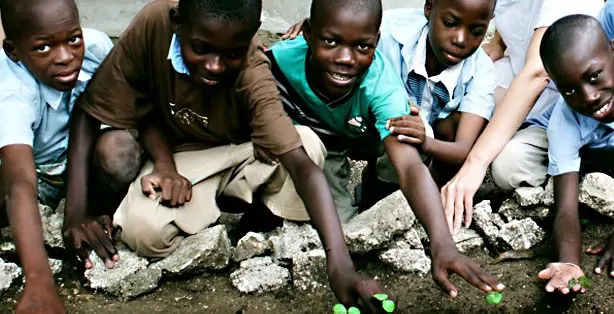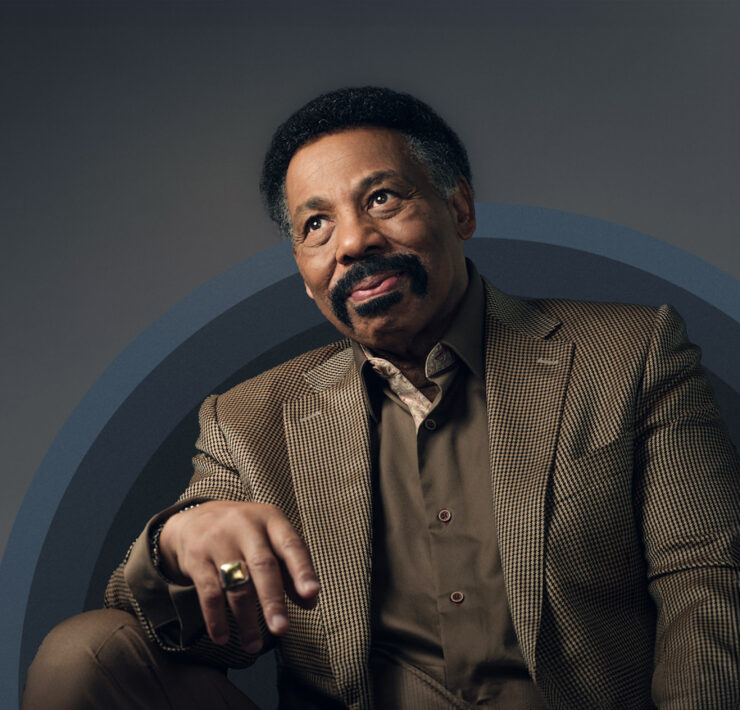
After the earthquake struck Haiti, Julie Colombino used her two weeks’ vacation to go help. Upon returning to Orlando, Fla., and feeling the need to do more, she resigned from her position at United Way and called two other women she’d worked with in Haiti. The three decided to quit their jobs and start REBUILD Globally. Based on sustainability and empowering locals, the young organization is seeking to rebuild Haiti one garden, sandal and trash block at a time.
Can you explain the background of REBUILD Globally and how you came to start it?
After the earthquake hit, I went on a relief workers’ flight to Haiti by myself and hooked up with a couple different groups while I was over there. I basically was doing facilitation. If somebody needed medical supplies, I’d go to the airport, I’d try to figure out how to get it, get a car. I was just in the background trying to get people what they needed because I was just by myself and I didn’t have any supplies with me.
While I was there, I met these two other women, Malia Schneider and Kim Reidelbach, and they were doing the same thing. They were actually there with a church group, but they were leading the facilitation, so they had partnerships with the Army, and the U.N. and the airport. There was such a backup at the airport and they had tons of supplies they were trying to get out. So we started working together … and all we kept saying was: “People need to work. There is so much work to be done, why is this not happening?”
I worked at the United Way at that point, and I’d taken my vacation to go over there, so I came back, and I resigned from the United Way, and called Malia and Kim and said: “I’m going back. Do you guys want to go with me?” And they said, “Yeah, let’s do this.” So the three of us went back together again, just independently, not with a group. And we stayed at the U.N. base and started talking about, “What can we really do, with our lack of resources and our lack of contacts?”
So we started doing what we were calling trash blocks. We were taking the garbage—rubble and styrofoam, plastic bottles and glass—mixing it all up and making these blocks out of it. We originally thought we were just going to rebuild Haiti making the used trash blocks and building houses. So we were doing that, and we came back again, and it wasn’t strong enough. We had to rethink what we were doing, so we started making planters and tables out of these trash blocks so we could help people.
Also, when we were there, we were doing gardening. We found tons of seeds and we were working with orphanages and bringing them seeds. So then we decided to make these planters because land is a huge issue. We’ve been back [in Orlando] for the last five weeks getting everything ready to go. We’ve been partnering with another company called Re:Treads, and we’ve been making shoes out of old tires. So we are going to employ people to make these shoes, and for every pair that sells back in the U.S., Re:Treads is giving REBUILD a pair so we can give [them] to the street kids in Haiti. So we have community gardens, shoes and trash blocks. They’re the three projects we’re working on. It’s all sustainable development. It is all employment and agricultural green initiatives.
What made you decide to start the Garden Club?
We met a friend, his name is Reggie, who owns three orphanages in Haiti, and all three crumbled. So we helped him, with a lot of people, find the kids that had survived. We found 116 kids. And back then, we cleared a junkyard on land that he owned and set up a tent there. After about five weeks, we moved the kids from that junkyard onto his personal house property and now that orphanage is called Future Haiti.
[While helping] we kept seeing that the little boys just weren’t doing as well as the little girls. The girls would be braiding hair, and playing games, and they seemed to be doing better than the boys. So we were like, “What can we do?” And we decided we’d do this garden club. So we picked nine boys that were having a really tough time, and it was incredible. They cleared this land in like five seconds, planted these seeds. They bordered it with rubble, they built fences out of old pieces of trash because they wanted to protect it from the other kids that were playing in it. We bought seeds from everywhere we could find, and we tried to get everything we could to expand the garden. It was really helping. They were doing better in school. Their life was getting better. We thought this garden that was really kind of silly, and then it was making it better for them.When we go back, we’re looking for land so we can do a co-op garden with the planters, and start distributing a lot of that to the tents because a lot of people won’t have land. If they have the planters at least made out of recycled materials, they can start planting their own, at least something outside of their tent.
What are your goals for your next trip to Haiti?
To secure the land and to set up the Re:Treads workshop. There is no electricity, it’s a hand-press where you stamp out the shoes and there are leather straps that can be glued in. We just need to find our land, set up shop and get some people working. We need to collect tires and trash. So that’s my first step is to make sure Re:Treads is set up. And then we’ll be working to get the gardens and the trash blocks. We’re starting with one project at a time.
Tires are everywhere [in Haiti], and they’re burning them right now. It’s like a catch-22 because you had to bring in these millions of bottles of water, so you’re thankful there is clean water, but then they’re burning piles because there is no waste management system. There is no recycling system, so people are burning massive piles of stuff, bringing in tons of pollutants into the air. They’re dropping rubble into the ocean. It’s really bad for the planet, so that’s why, again, this is a global issue, it’s not just contained in Haiti.
What is your ultimate goal in helping rebuild Haiti?
That they can take part in it. Nobody knows the land of Haiti better than Haitians. No one knows what is needed better than the people of Haiti. I hope we can be respectful as Americans coming in to relieve the devastation, and I hope we can truly listen. We do have resources as Americans, and the poorest person here can’t compare to the poorest person in Haiti. But the poorest person in Haiti has so much to offer, and I just hope we can listen, and I hope we can really work alongside people and do what’s best for the country so it can be sustainable. Because no one wants to stand in a rice line. No one wants to receive a bag of rice. They want to grow their own rice, and they want to grow their own sour gum. We want to help offer that opportunity to every person that deserves it.
To learn more about this organization and read their blog, visit REBUILDGlobally.org.




















